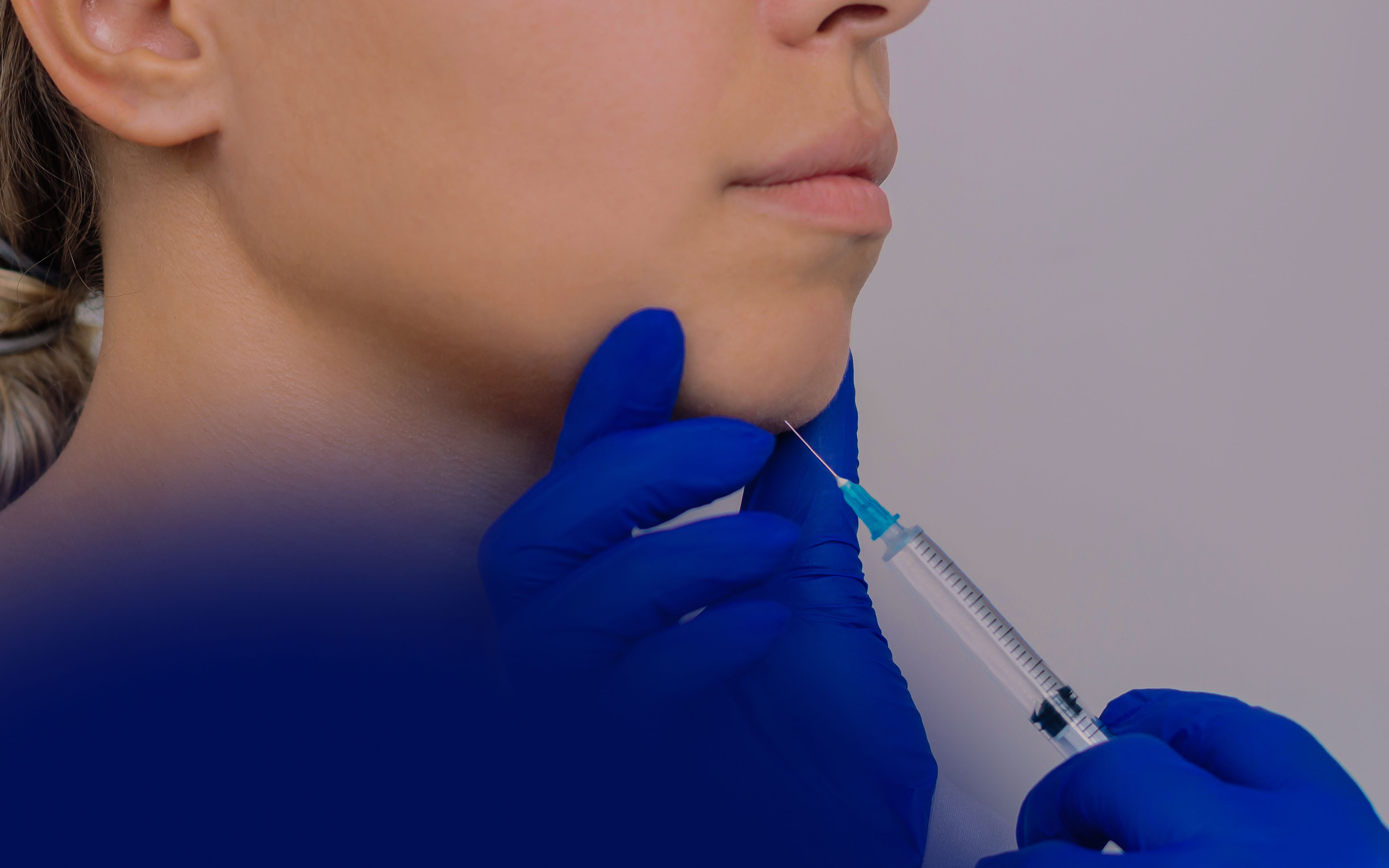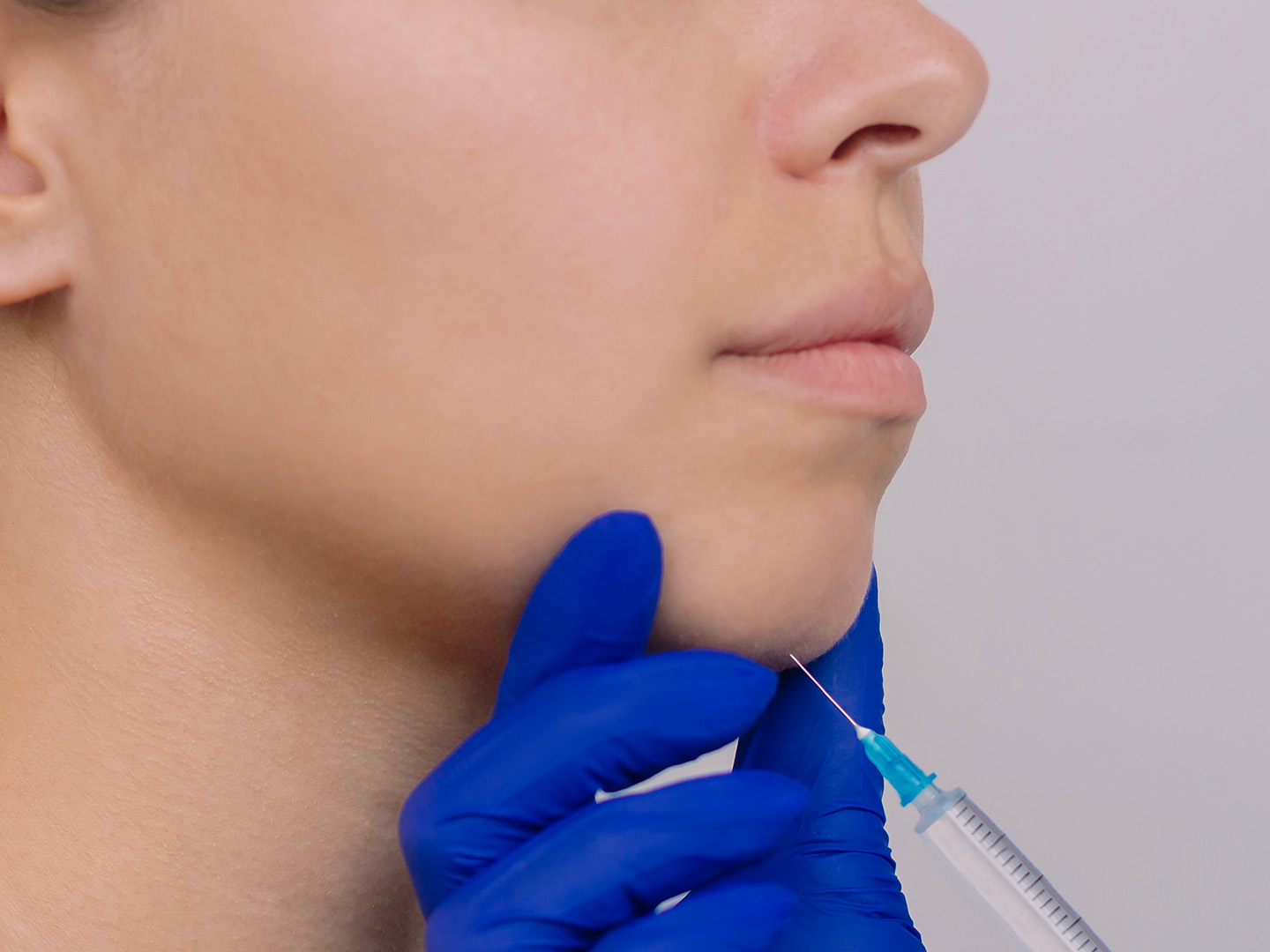
Botox is commonly associated with smoothing forehead lines or softening crow’s feet, but it also plays an essential role in refining the lower face, specifically, the chin. Chin Botox is gaining popularity as patients and practitioners recognize how much influence the chin has on facial harmony.
The mentalis muscle, which controls chin movement, is often overactive. This leads to dimpling, puckering, or even a “cobblestone” texture that becomes more noticeable with age or facial expression. Injecting small amounts of Botox into the chin can smooth the area, relax hyperactivity, and even subtly improve facial balance.
In this guide, we’ll explore how Botox works in the chin area, who makes a good candidate, what to expect in terms of results, and important technical considerations for injectors.
Why Is Botox Used in the Chin Area?
Botox in the chin targets the mentalis muscle, a paired muscle located at the tip of the chin. In many patients, especially with age or overuse, this muscle becomes tight or hyperactive. The result is chin dimpling, tension, and a puckered appearance at rest or during facial animation.
Injecting Botox into this area can:
- Smooth chin texture by reducing muscle contraction.
- Improve lower face balance in cases of mild chin retrusion or asymmetry.
- Slightly project the chin by relaxing upward pull.
- Support full-face harmonization when paired with other treatments like masseter Botox, jawline filler, or lip enhancement.
Many patients opt for lower face Botox treatments as part of a broader effort to achieve balance and soften signs of aging in subtle, natural-looking ways.
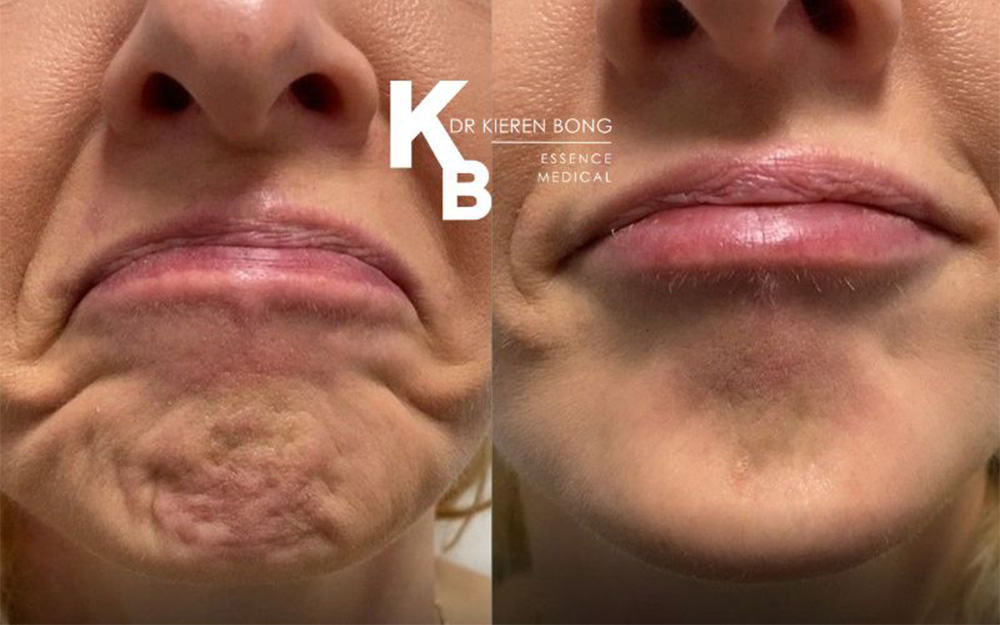
Chin Botox: What It Treats
Chin Botox is effective for addressing a range of cosmetic and functional concerns tied to mentalis muscle overuse. These include:
- Dimpled or pebbled chin at rest or with movement
- Downturned mouth resulting from chin tension pulling down on the lower lip
- Mild chin retraction due to overactive muscle tone
- Facial asymmetry caused by uneven muscle movement
- Tension in the lower face, particularly in patients with habits like over-clenching or pursing the lips
It’s a subtle but impactful treatment that can transform the way the lower third of the face interacts with the rest of the facial structure.
Who Is the Best Candidate for Chin Botox?
The ideal candidate for chin Botox is someone who has:
- Visible chin dimpling either at rest or during talking or smiling
- A preference for non-filler-based lower face treatments
- Mild asymmetry or tension around the mouth
- Early signs of aging in the chin or lower lip area
Chin Botox is often a first-line option for patients not yet ready for dermal fillers or those who already have volume but want better muscle relaxation.
However, it’s not ideal for patients with significant bone loss, deep retrusion, or severe volume deficiency; these concerns are better addressed with chin filler or implant-based approaches. For an overview of chin enhancement in male patients, see our article on male Botox before and after cases.
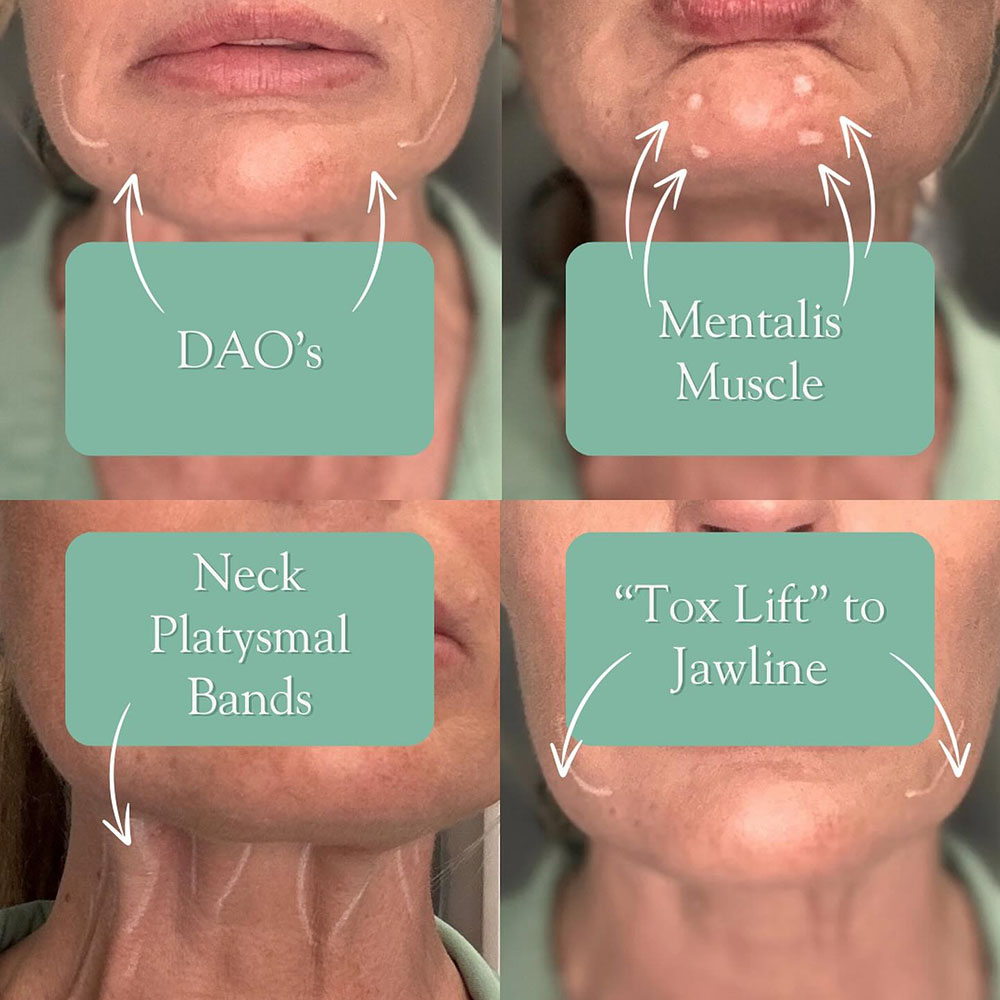
Who Should Not Get Chin Botox?
While Botox is generally safe, not every patient is a good candidate for mentalis treatment.
Avoid chin Botox in patients with:
- Weak or recessed chins due to skeletal structure (consider filler instead)
- A history of lower lip incompetence or oral motor issues
- Conditions affecting neuromuscular control
- Pregnancy or breastfeeding, as a general precaution
- Unrealistic expectations or a goal of significant reshaping (Botox offers refinement, not structural change)
Like any treatment, a thorough consultation, dynamic assessment, and detailed history are critical. To learn more about how to safely assess patients for neurotoxin treatment, refer to our upcoming Botox training and zone-specific modules.
Chin Botox Injection Technique and Treatment Considerations
Target Muscle: Mentalis
The mentalis lies centrally in the chin, just beneath the skin and above the periosteum. Injections must be placed carefully to affect the muscle without spreading into nearby areas like the depressor labii or orbicularis oris.
Injection Tips:
- Typical dosing: 4–8 units total (2–4 units per side)
- Use a 32G needle for precision
- Inject deep intramuscularly, but avoid touching bone
- Place one or two points per side, depending on muscle width
- Avoid injecting too laterally to prevent affecting lip movement
Incorrect placement can cause unwanted effects, including asymmetrical smiles, drooping of the lower lip, or difficulty speaking or eating.
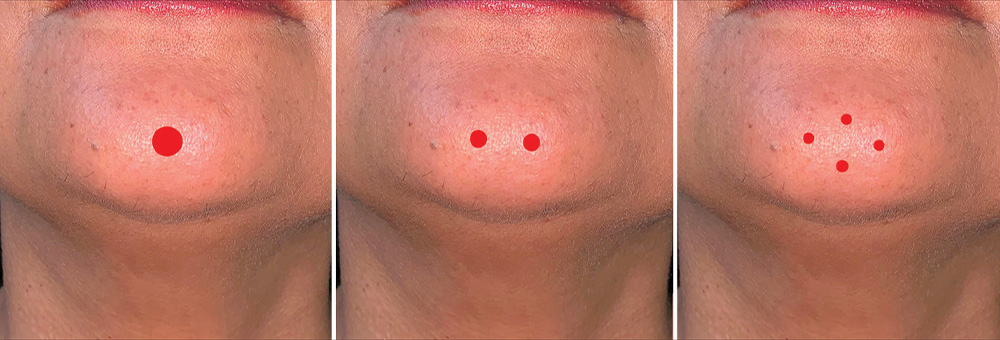
Expected Results of Chin Botox
Results typically appear within 3 to 7 days, with full effects visible by two weeks. The most common outcomes include:
- A smoother chin surface
- Reduced “pebbling” during speech or smiling
- A more relaxed lower face, with less tension
- In some cases, a subtle lift of the lower lip
- Improved facial harmony when paired with surrounding treatments
Results last around 3 to 4 months, depending on the patient’s metabolism, dosage, and facial activity. Touch-up treatments are needed to maintain smoothness and muscle relaxation.
For some patients, the before and after difference is significant, even if it looks like a minor tweak on the surface, the impact on confidence and facial expression can be considerable. See our breakdown of Botox for men for real-world examples.
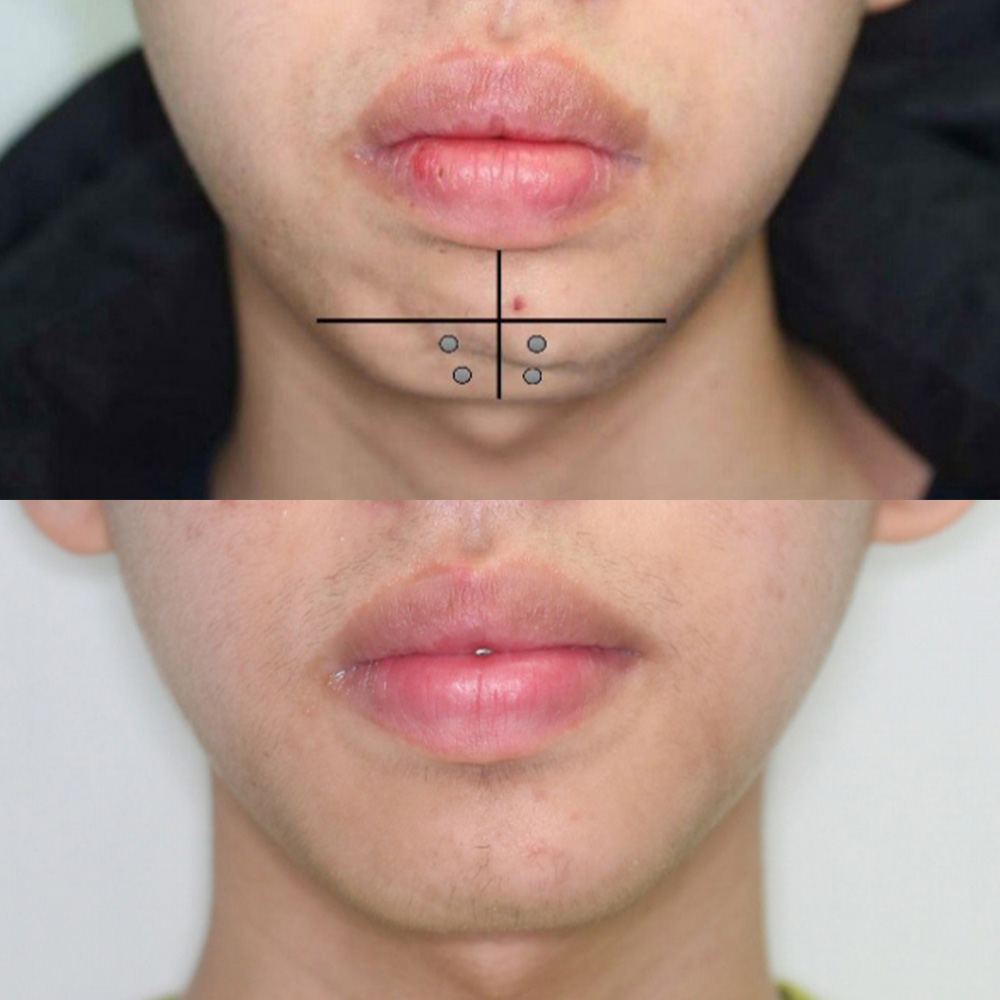
Can Chin Botox Go Wrong?
While chin Botox is generally safe in experienced hands, complications can happen, especially in the lower face, where small muscles control important functions like speech, eating, and expression. The most common side effects include asymmetry, a flattened chin appearance, or lower lip droop, typically caused by diffusion of the toxin beyond the mentalis muscle. Patients may also notice a subtle change in their smile if nearby muscles are affected.
These effects are usually mild and temporary, resolving within a few months as the Botox wears off. Still, even minor issues in this area can be frustrating for patients, which is why precise technique, appropriate dosing, and careful assessment of muscle activity are critical.
Proper injector training is key to avoiding unwanted outcomes. Practitioners treating the lower face should be confident in their anatomical knowledge and may benefit from targeted Botox training focused on perioral and chin-specific injection strategies.
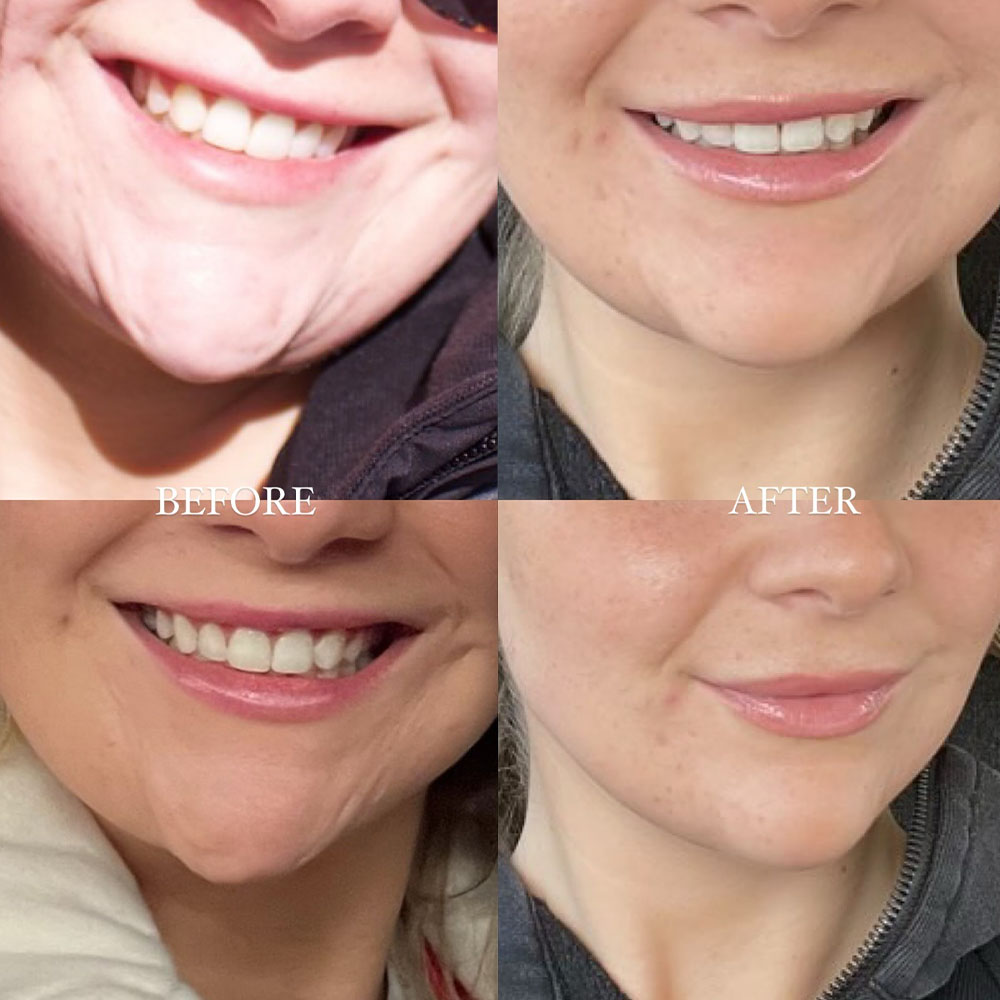
Conclusion: Can Botox Help a Double Chin?
Chin Botox is not a treatment for submental fat, so it won’t reduce a true double chin. However, in patients with a mild double chin caused by poor muscle tone or postural tension, relaxing the mentalis can help slightly improve the appearance.
In most cases, double chin correction requires fat-dissolving injections (like deoxycholic acid), skin tightening, or filler to improve chin projection.
What Botox can do is refine the shape and texture of the chin, contribute to a more balanced profile, and support overall facial harmony. When used thoughtfully and precisely, it’s an excellent tool in the lower-face aesthetic arsenal.
To continue building skills in this area, consider exploring our modules on facial harmonization, botox forehead injection sites, and quality aesthetic courses focused on the lower face.

FAQ
Is Botox or fillers better for the chin?
It depends. Botox is better for dynamic issues like dimpling or tension. Fillers are preferred for volume loss, contouring, or chin projection.
Why do I smile weird after chin Botox?
This can happen if the mentalis is over-treated or if the toxin spreads to nearby muscles. It typically resolves as the Botox wears off in 3–4 months.
Can Botox lift the jawline?
Botox can help sharpen the jawline when used in the masseter or platysma muscles, but it won’t physically lift the skin. It's often part of a multi-treatment approach.
What are the riskiest areas for Botox?
The chin, around the mouth, and lower face in general require extra care. Errors can affect speech, eating, and expression. Proper training is essential.
How many years does chin filler last?
Hyaluronic acid fillers in the chin can last 12 to 18 months, though this varies by product, patient metabolism, and injection technique.
Sources
- de Maio M, Wu WTL, Goodman GJ, Monheit G; Alliance for the Future of Aesthetics Consensus Committee. Facial Assessment and Injection Guide for Botulinum Toxin and Injectable Hyaluronic Acid Fillers: Focus on the Lower Face. Plast Reconstr Surg. 2017;140(3):393e-404e. doi:10.1097/PRS.0000000000003646 https://pubmed.ncbi.nlm.nih.gov/28841604/
- Hsu AK, Frankel AS. Modification of Chin Projection and Aesthetics With OnabotulinumtoxinA Injection. JAMA Facial Plast Surg. 2017;19(6):522-527. doi:10.1001/jamafacial.2017.0606 https://pubmed.ncbi.nlm.nih.gov/28750118/
- Kim D, Park JH, Favero V, Mah J, Jung YS, Kim ST. Effect of Botulinum Toxin Injection on Asymmetric Lower Face with Chin Deviation. Toxins (Basel). 2020;12(7):456. Published 2020 Jul 17. doi:10.3390/toxins12070456 https://pubmed.ncbi.nlm.nih.gov/32708942/
- Hall C. Optimizing Facial Aesthetics: Sequential Application of Botulinum Toxin A and Dermal Fillers for Enhanced Results. Plast Aesthet Nurs (Phila). 2024;44(1):70-71. doi:10.1097/PSN.0000000000000546 https://pubmed.ncbi.nlm.nih.gov/38166310/
*This article is intended for licensed medical professionals. All protocols, dosages, and treatment insights referenced herein are based on published literature. The content is not intended to encourage application, diagnosis, or self-treatment of unlicensed individuals, and should not be used as a substitute for the clinical judgment of a qualified healthcare provider.
Disclaimer:
This article is intended for licensed medical professionals. All protocols, dosages, and treatment insights referenced herein are based on published literature. The content is not intended to encourage application, diagnosis, or self-treatment of unlicensed individuals, and should not be used as a substitute for the clinical judgment of a qualified healthcare provider.
